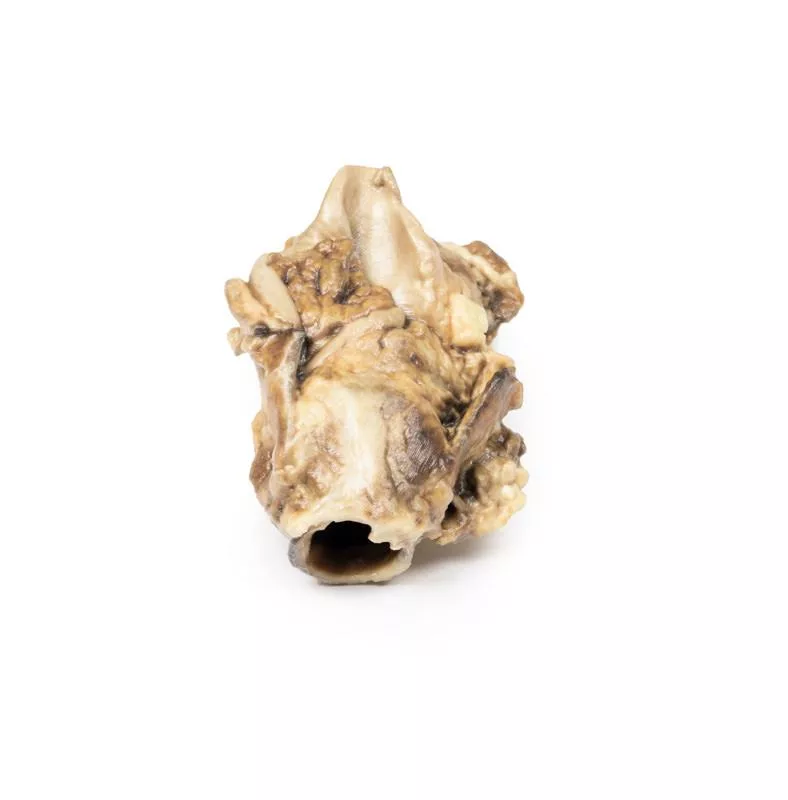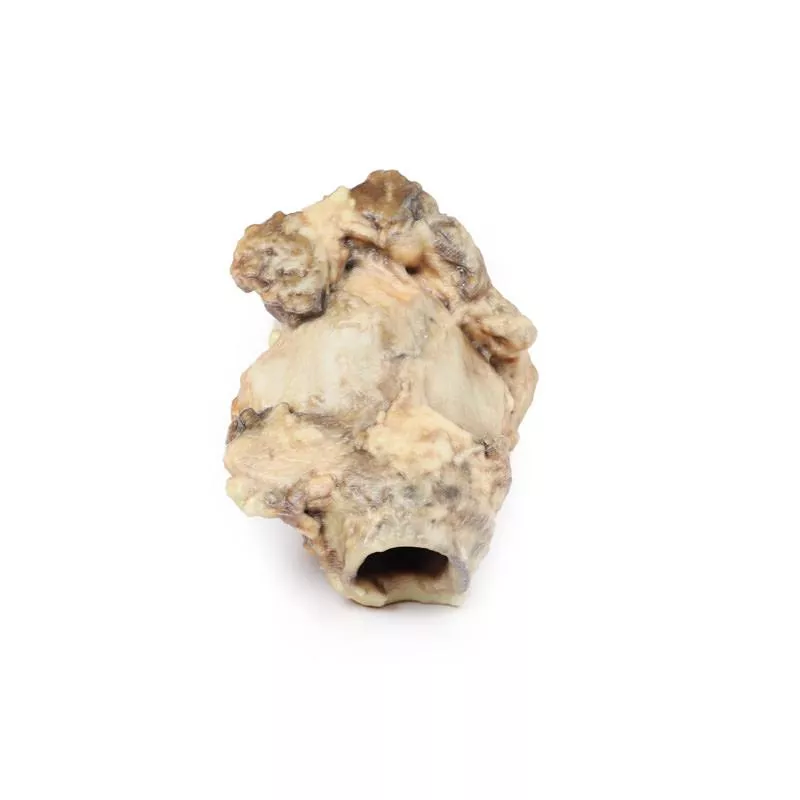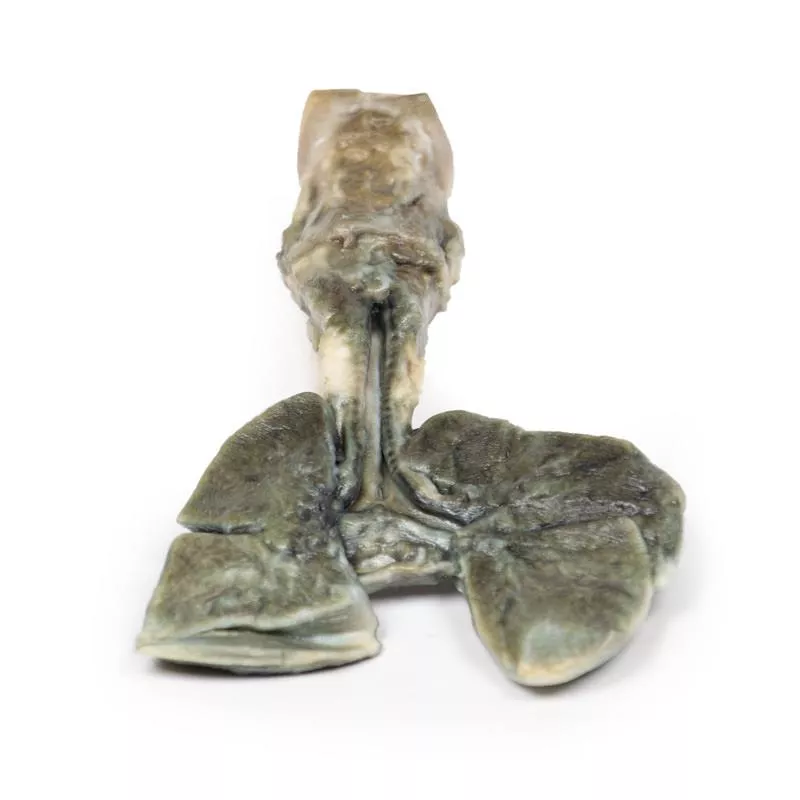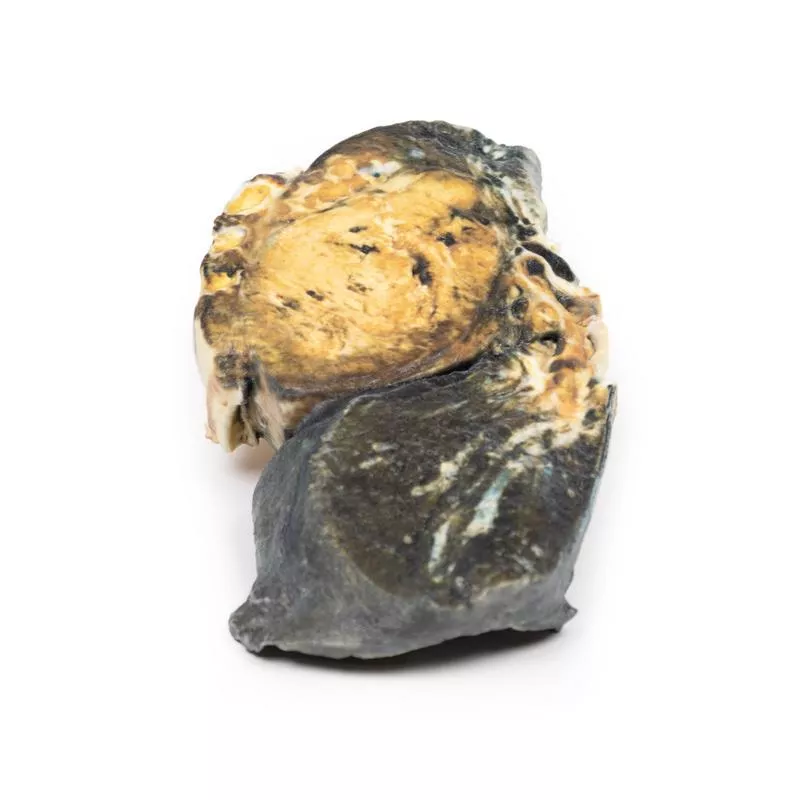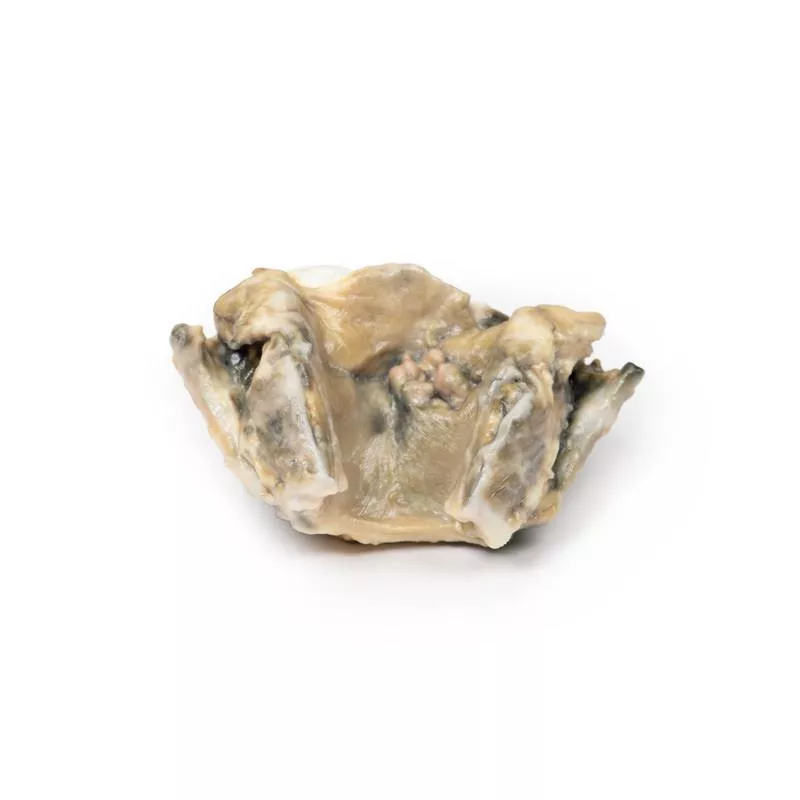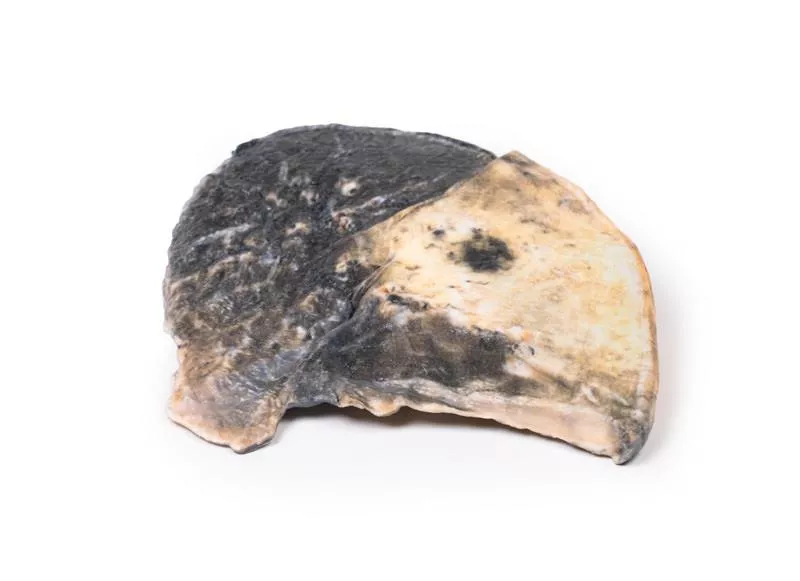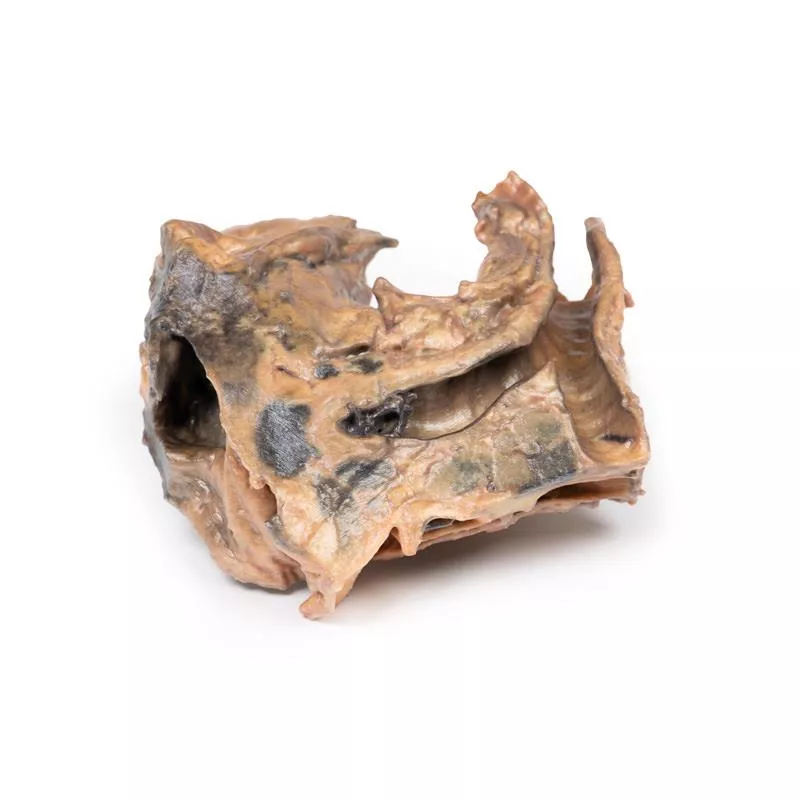Product information "Carcinoma of Pyriform Fossa"
Clinical History
A 60-year-old man presented with a 6-week history of globus sensation and dysphonia. Clinical examination revealed enlarged cervical lymph nodes. A laryngeal tumour was diagnosed, and he underwent a laryngectomy with cervical lymph node dissection. The patient made a full recovery.
Pathology
The specimen shows the larynx from the posterior view. An irregular, fungating tumour originates from the left pyriform fossa, accompanied by distortion and oedema of surrounding tissues. Histological analysis confirmed a squamous cell carcinoma.
Further Information
Over 95% of laryngeal cancers are squamous cell carcinomas (SCC), typically arising on the vocal cords, epiglottis, aryepiglottic folds, or pyriform sinuses. The disease often begins as carcinoma in situ and can become invasive if carcinogenic exposure continues. Main risk factors include tobacco, alcohol, HPV infection, asbestos, and radiation. Men are more commonly affected, usually in their 60s.
Laryngeal SCC can invade surrounding structures and spread via lymphatic or haematogenous routes, most often to cervical nodes or the lungs. Symptoms include hoarseness, dysphagia, throat discomfort (globus), and cough; less commonly, haemoptysis or breathing difficulty.
Treatment depends on the stage and may include laser therapy, microsurgery, or radiotherapy for early cases. Advanced disease may require laryngectomy and chemotherapy. HPV-positive tumours have better outcomes, and vaccination programmes aim to reduce HPV-related head and neck cancers.
A 60-year-old man presented with a 6-week history of globus sensation and dysphonia. Clinical examination revealed enlarged cervical lymph nodes. A laryngeal tumour was diagnosed, and he underwent a laryngectomy with cervical lymph node dissection. The patient made a full recovery.
Pathology
The specimen shows the larynx from the posterior view. An irregular, fungating tumour originates from the left pyriform fossa, accompanied by distortion and oedema of surrounding tissues. Histological analysis confirmed a squamous cell carcinoma.
Further Information
Over 95% of laryngeal cancers are squamous cell carcinomas (SCC), typically arising on the vocal cords, epiglottis, aryepiglottic folds, or pyriform sinuses. The disease often begins as carcinoma in situ and can become invasive if carcinogenic exposure continues. Main risk factors include tobacco, alcohol, HPV infection, asbestos, and radiation. Men are more commonly affected, usually in their 60s.
Laryngeal SCC can invade surrounding structures and spread via lymphatic or haematogenous routes, most often to cervical nodes or the lungs. Symptoms include hoarseness, dysphagia, throat discomfort (globus), and cough; less commonly, haemoptysis or breathing difficulty.
Treatment depends on the stage and may include laser therapy, microsurgery, or radiotherapy for early cases. Advanced disease may require laryngectomy and chemotherapy. HPV-positive tumours have better outcomes, and vaccination programmes aim to reduce HPV-related head and neck cancers.
Erler-Zimmer
Erler-Zimmer GmbH & Co.KG
Hauptstrasse 27
77886 Lauf
Germany
info@erler-zimmer.de
Achtung! Medizinisches Ausbildungsmaterial, kein Spielzeug. Nicht geeignet für Personen unter 14 Jahren.
Attention! Medical training material, not a toy. Not suitable for persons under 14 years of age.



















